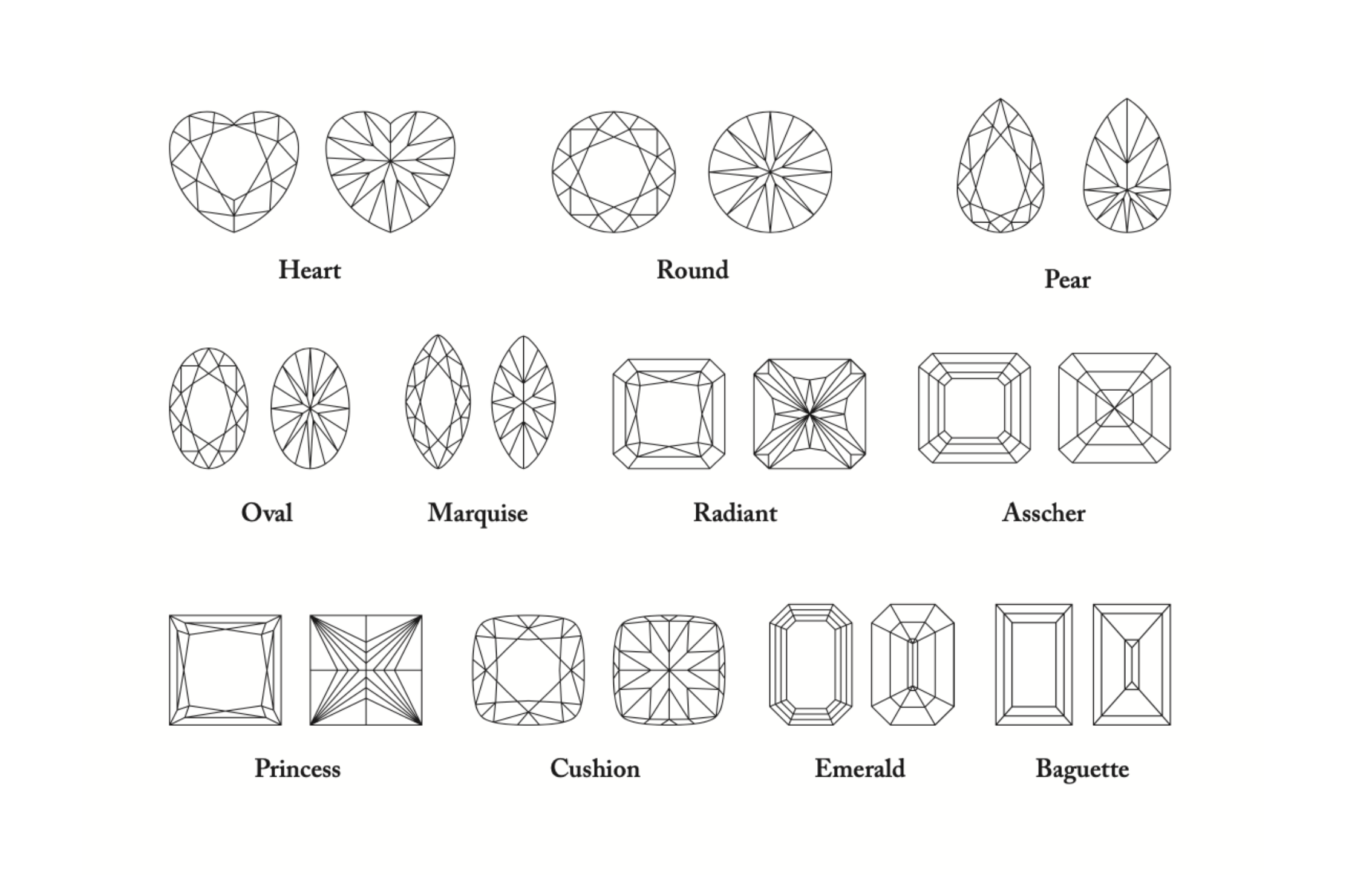
The Guide To Diamonds
Breaking down the four C’s
When choosing a piece of jewellery for your significant other, the design can make a huge difference. Whether you want to craft a bespoke piece or have a unique twist on a timeless classic, the main attention will be on the stone you want to incorporate.
However, choosing the right diamond or gemstone to make a statement and sweep your other half off their feet can be challenging if you are not familiar with the elements that affect the diamond’s quality and appearance. Whilst you may have an idea of the end goal, making sure that your diamond has the right combination of the 4 C’s is vital.
Cut, Colour, Clarity and Carat will be the four pillars you will need to understand to ensure your choice will be the perfect pairing for your partner.
1. Cut
Although it’s assumed that the cut of a diamond refers to its shape, the cut is actually responsible for the quality and brilliance of the stone, making it arguably the most important of the four C’s if you’re after a diamond that has an excellent sparkle.
The proportions, depth and symmetry that determine the grading of the diamond are also key to achieving high-quality scintillation and coloured sparkle, known as fire or brilliance, that you can see when the diamond is exposed to light.
The cut will determine how light is reflected throughout the stone which, of course, has an impact on how it shines. Generally, the more facets the stone has, the more reflections of light, the greater the brilliance.
2. Colour
The colour of a diamond comes from the bottom of the stone and can range from colourless to a light yellow hue. The diamond’s colour is graded by the GIA diamond colour scale from D to Z and while it’s said lack of colour in a diamond makes it more valuable, the colour of a diamond can be really personal.
Diamonds can have different base colours, meaning the hue can be anything from blue to pink to green. If you’re looking for something different, the colour could be the outstanding factor that will ensure that your diamond will catch everyone’s eye with a stylish flare and a beautiful personal twist.
3. Clarity
Clarity is essentially measuring the purity of your diamond. Depending on the way a diamond is formed, it’s possible that natural materials can be trapped within the diamond, creating blemishes or small imperfections within the structure, called inclusions.
This is inspected with 10x magnification to assign a clarity grade to each diamond. The perfect diamond would be marked at the top end of the scale as internally flawless with no inclusions.
Whilst clarity has a significant effect on the value of a diamond, most inclusions and defects are invisible to the naked eye, so be sure to keep this in mind when looking for your stone.
4. Carat
The carat is the universal way of weighing stones, which originates from ancient times. Traders would compare the weight of gemstones to that of one Carob seed; these seeds were approximately all the same weight, with little variance, weighing around 0.20 grams which guaranteed accuracy and this unit is still used today.
The higher the carat weight, the rarer the diamond, making them more valuable. However, a diamond can appear larger than its actual weight depending on the cut and the way it is set in a piece of jewellery, so keep this in mind when you are looking around for something that will stand out.




